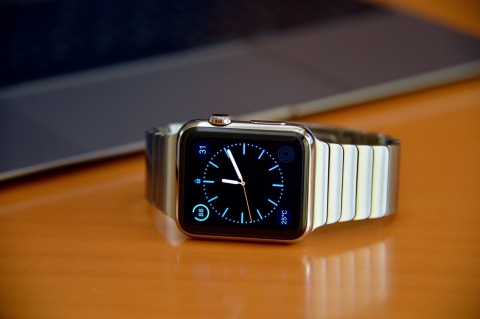
Wearable technology is a news distribution dream. It’s always on the user, and the notifications are addictively impossible to ignore (like, actually, chemically addictive). Consumers actually can’t help but read our headlines!
OK, that’s a bit of hyperbole, but in general it’s true. News outlets now have a way to put their most important headlines in front of consumers in a way that almost requires them to be read, no matter the time of day or night.
The trick, and one that must be made with careful consideration, is to properly curate. A phone buzzing is easily ignored when sitting in a purse or pocket; a watch on your wrist is not. When the watch buzzes, it’s pretty compulsory to twist your arm and give it a sideways glance.
Ensuring that you tell the users just enough without annoying them every moment of the livelong day is a thin tightrope to walk. Notifying an Apple Watch user that your new Sunday Style section will have a three-page spread on strappy sandals is probably not going to be the best use of a notification.
However! There is a place where these random taps and pings will shine, and that’s (sort of obviously) breaking news. World disasters, stock market crashes, Justin Bieber arrests, these are the things people want to know about right now, and the small screen of a watch can give them the majority of the information they need quickly.
Plus, it means that news organizations can actually work on getting the scoop again. Instead of a user randomly checking their phone and seeing 15 different apps posting the same thing, the first organization that gets the notification out gets the eyeballs.
To truly take advantage of this form of news distribution, though, is going to take some ingenuity. You have to give the people what they want (and maybe a little of what you think they need), and to do that the suggestions have to be tailored.
If you’re running a regional daily, it’s a good bet that the alderman from town X getting a DUI will be very interesting to people living in X, but completely worth ignoring to anyone living in village Y. You’ll definitely be printing the story in all the editions tomorrow, but sending a notification to every reader will do nothing but convince them your paper is out of touch at best and irrelevant at worst.
The obvious answer of having people fill out their likes when they sign up is basically worthless. Either the categories are too broad or people sign up for everything. For instance, I’m really into travel news and updates, but really really really don’t care about the newest resort hotel. Instead, I want to hear about the new airports and which airlines are buying which Boeing and Airbus models. Predictive analysis is a much better option here.
Taking note of what people are reading after reading other things in various locations at various times of day means you can start to generate a pattern of what will come next (yes, like Netflix does). It’s certainly not the easiest or cheapest problem to solve, but if doing notifications right means enough to you then it’s worth hiring the people to do it.
Media organizations have this rare, maybe once-in-a-career opportunity. It’s really ours to screw up. Unfortunately, the news media has a track record that almost guarantees entrenched interests will hold back, thinking it’s a fad and that we’ll be starting up the presses for the afternoon edition again any day now.
It can’t happen. There is SUCH a huge opportunity here to get readers, to get followers, to promote to advertisers, to have people read news for once instead of listicles. If we screw this one up, it’s on our shoulders and we probably won’t get a second go-round.
This post was originally published on IJNet, which is produced by ICFJ.
Main image CC-licensed via Flickr by raneko.